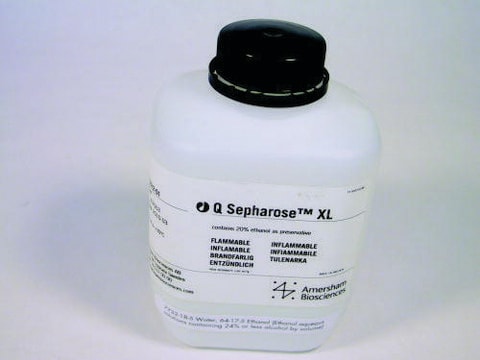S1799
SP Sepharose™
Fast Flow, aqueous ethanol suspension, 45-165 μm (wet), exclusion limit ~4,000,000 Da
Sinónimos:
Sulfopropyl-Sepharose™
About This Item
Productos recomendados
Quality Level
form
aqueous ethanol suspension
matrix active group
, —CH2-SO3-
particle size
45-165 μm (wet)
pore size
~4,000,000 Da exclusion limit
capacity
180-250 μeq/mL, gel
storage temp.
2-8°C
¿Está buscando productos similares? Visita Guía de comparación de productos
application
Physical form
Legal Information
signalword
Warning
hcodes
Hazard Classifications
Flam. Liq. 3
Storage Class
3 - Flammable liquids
wgk_germany
WGK 1
flash_point_f
100.4 - 109.4 °F
flash_point_c
38 - 43 °C
Certificados de análisis (COA)
Busque Certificados de análisis (COA) introduciendo el número de lote del producto. Los números de lote se encuentran en la etiqueta del producto después de las palabras «Lot» o «Batch»
¿Ya tiene este producto?
Encuentre la documentación para los productos que ha comprado recientemente en la Biblioteca de documentos.
Los clientes también vieron
Nuestro equipo de científicos tiene experiencia en todas las áreas de investigación: Ciencias de la vida, Ciencia de los materiales, Síntesis química, Cromatografía, Analítica y muchas otras.
Póngase en contacto con el Servicio técnico















